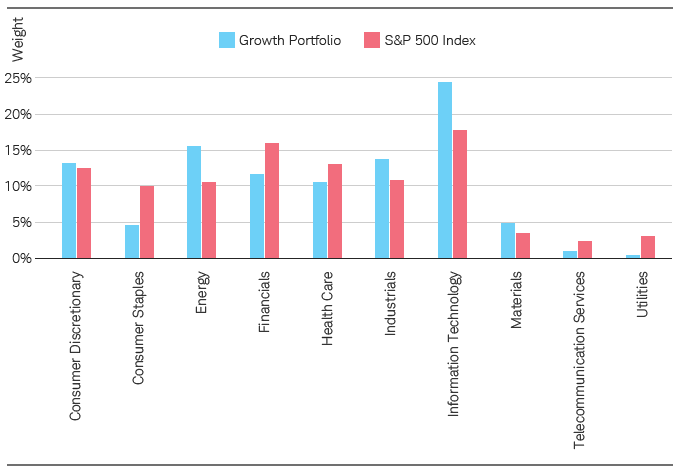Comparing against a benchmark
Introduction to Portfolio Analysis in Python

Charlotte Werger
Data Scientist
Active investing against a benchmark
Active return for an actively managed portfolio
$$
- Active return is the performance of an (active) investment, relative to the investment's benchmark.
- Calculated as the difference between the benchmark and the actual return.
- Active return is achieved by "active" investing, i.e. taking overweight and underweight positions from the benchmark.
Tracking error for an index tracker
$$
- Passive investment funds, or index trackers, don't use active return as a measure for performance.
- Tracking error is the name used for the difference in portfolio and benchmark for a passive investment fund.
Active weights

1 Source: Schwab Center for Financial Research.
Active return in Python
# Inspect the data
portfolio_data.head()
mean_ret var pf_w bm_w GICS Sector
Ticker
A 0.146 0.035 0.002 0.005 Health Care
AAL 0.444 0.094 0.214 0.189 Industrials
AAP 0.242 0.029 0.000 0.000 Consumer Discretionary
AAPL 0.225 0.027 0.324 0.459 Information Technology
ABBV 0.182 0.029 0.026 0.010 Health Care
1 Global Industry Classification System (GICS)
Active return in Python
# Calculate mean portfolio return
total_return_pf = (pf_w*mean_ret).sum()
# Calculate mean benchmark return
total_return_bm = (bm_w*mean_ret).sum()
# Calculate active return
active_return = total_return_pf - total_return_bm
print ("Simple active return: ", active_return)
Simple active return: 6.5764
Active weights in Python
# Group dataframe by GICS sectors
grouped_df=portfolio_data.groupby('GICS Sector').sum()
# Calculate active weights of portfolio
grouped_df['active_weight']=grouped_df['pf_weights']-
grouped_df['bm_weights']
print (grouped_df['active_weight'])
GICS Sector
Consumer Discretionary 20.257
Financials -2.116
...etc
Let's practice!
Introduction to Portfolio Analysis in Python


